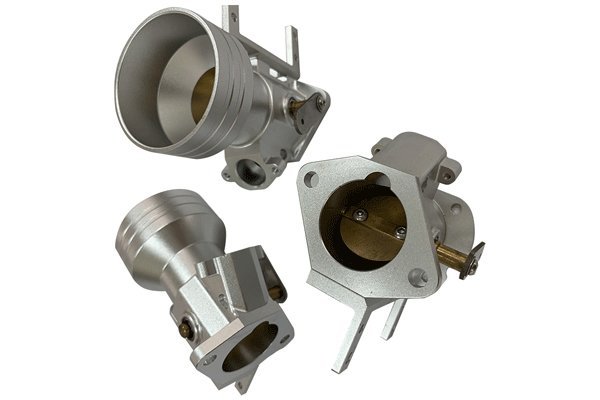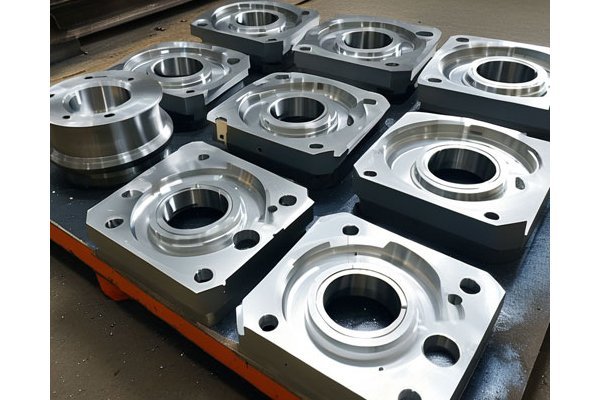Did you know that the tool material you choose in CNC machining can impact not only the efficiency of the machining process but also the quality of the final product? In fact, studies have shown that using the appropriate tool material can drastically reduce machining times by up to 30% while improving tool life by over 50%. In the world of CNC machining, where precision, efficiency, and cost-effectiveness are paramount, understanding the implications of tool material selection is crucial.
This blog will explore the intricate relationship between tool material and machining results, providing insights into the different types of tool materials available, their properties, and how to select the right one based on your specific machining needs.
Computer Numerical Control (CNC) machining is a manufacturing process that uses pre-programmed computer software to control the movement of machinery and tools. It allows manufacturers to create parts with high precision, utilizing various operations such as drilling, milling, turning, and more. The rise of CNC technology has revolutionized manufacturing, leading to increased efficiency, reduced labor costs, and the ability to produce complex geometries with unprecedented accuracy.
In CNC machining, the choice of tool material can greatly influence the machining results. The right tool will provide:
Understanding these factors will help in optimizing the CNC machining process, leading to cost savings and improved product quality.
The choice of tool material can vary greatly depending on the specific application and machining requirements. Below are the primary types of tool materials used in CNC machining:
3.1 High-Speed Steel (HSS)
High-Speed Steel (HSS) is a type of tool steel that retains its hardness even at elevated temperatures. It is commonly used for making cutting tools such as drills and milling cutters.
Advantages:
Disadvantages:
3.2 Carbide Tools
Carbide tools are made from tungsten carbide, which is known for its hardness and wear resistance. Carbide inserts are commonly used for turning operations.
Advantages:
Disadvantages:
3.3 Cermet Tools
Cermet tools are composed of ceramic materials and metallic binders, which provides a good balance of hardness and toughness.
Advantages:
Disadvantages:

3.4 Ceramics
Ceramic tools are suitable for high-speed machining of hard materials but are very brittle.
Advantages:
Disadvantages:
3.5 Diamond Tools
Diamond tools are made with synthetic diamonds that provide exceptional cutting capabilities, especially for non-metallic materials.
Advantages:
Disadvantages:
3.6 Coated Tools
Coated tools feature a layer of another material, such as titanium nitride, to enhance surface properties.
Advantages:
Disadvantages:
Selecting the right tool material depends not just on the type of material being machined but also on several other factors:
4.1 Material Properties
The physical and mechanical properties of both the tool material and the workpiece should be considered. Characteristics such as hardness, toughness, thermal conductivity, and resistance to wear and corrosion all play crucial roles.
4.2 Machining Conditions
Factors such as cutting speed, feed rate, depth of cut, and type of machining operation will dictate the appropriate choice of tool material. Higher speeds and feeds often necessitate more durable materials.
4.3 Cost Considerations
Tools made from advanced materials might provide better performance but can be significantly more expensive. Assessing the cost-to-benefit ratio based on expected tool life and production volume is essential.
Here’s a comparative analysis of various tool materials:
| Tool Material | Advantages | Disadvantages |
| —
| HSS | Cost-effective, good toughness | Lower speed capabilities |
| Carbide | High wear resistance, long life | Brittle, expensive |
| Cermet | Heat resistance, better finish | Costly, limited toughness |
| Ceramics | Extreme hardness, wear resistance | Brittle, limited toughness |
| Diamond | Best wear resistance, sharpness | High cost, limited applications |
| Coated | Enhanced durability, speed | Coatings can wear off |
Case Study 1: Aerospace Component Machining
In machining aerospace components, selecting carbide tools for high-speed milling has shown to increase productivity by 40%. This study revealed that while the initial investment in carbide tools was high, the long-term cost savings were significant due to reduced downtime and longer tool life.
Case Study 2: Medical Device Manufacturing
A company manufacturing surgical instruments experienced frequent tool failures when using HSS. By switching to coated carbide tools, they improved tool life by over 60% and enhanced the surface finish quality, which is critical for medical devices.
To achieve optimal results, consider implementing the following best practices:
The choice of tool material in CNC machining profoundly influences machining results, affecting tool life, surface finish, and overall efficiency. Understanding the properties and suitability of various tool materials is essential for achieving optimal machining outcomes. By carefully considering factors such as machining conditions, material properties, and cost analysis, manufacturers can make informed decisions that enhance productivity and reduce costs.
In a landscape where precision and efficiency are critical, this blog serves as an essential guide to optimizing your tool material selection process. By applying these insights and best practices, you ensure that your CNC machining operations not only meet but exceed industry standards, leading to superior product quality and satisfied customers. Keep in mind that your choice today shapes the success of your machining projects tomorrow.






